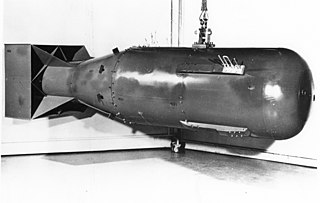 W
WNuclear proliferation is the spread of nuclear weapons, fissionable material, and weapons-applicable nuclear technology and information to nations not recognized as "Nuclear Weapon States" by the Treaty on the Non-Proliferation of Nuclear Weapons, commonly known as the Non-Proliferation Treaty or NPT. Proliferation has been opposed by many nations with and without nuclear weapons, as governments fear that more countries with nuclear weapons will increase the possibility of nuclear warfare, de-stabilize international or regional relations, or infringe upon the national sovereignty of nation states.
 W
WThe 2010 Nuclear Security Summit was a summit held in Washington, D.C., on April 12 and 13, 2010. The Summit focused on how to better safeguard weapons-grade plutonium and uranium to prevent nuclear terrorism.
 W
WThe 2012 Nuclear Security Summit was a summit held at the COEX Convention & Exhibition Center in Seoul, South Korea, on March 26 and 27, 2012. It was the second time the conference was held after the 2010 Nuclear Security Summit.
 W
WThe 2014 Nuclear Security Summit was a summit held in The Hague, the Netherlands, on March 24 and 25, 2014. It was the third edition of the conference, succeeding the 2012 Nuclear Security Summit. The 2014 summit was attended by 58 world leaders, some 5,000 delegates and some 3,000 journalists. The representatives attending the summit included U.S. President Barack Obama and Chinese President Xi Jinping.
 W
WThe Agreed Framework between the United States of America and the Democratic People's Republic of Korea was signed on October 21, 1994, between North Korea (DPRK) and the United States. The objective of the agreement was the freezing and replacement of North Korea's indigenous nuclear power plant program with more nuclear proliferation resistant light water reactor power plants, and the step-by-step normalization of relations between the U.S. and the DPRK. Implementation of the agreement was troubled from the start, but its key elements were being implemented until it effectively broke down in 2003.
 W
WYukiya Amano was a Japanese diplomat and the Director General of the International Atomic Energy Agency (IAEA). Amano previously served as an international civil servant for the United Nations and its subdivisions. On 22 July 2019, IAEA announced that Amano had died.
 W
WMassimo Aparo is an Italian diplomat, who started working as acting deputy director general and head of the Department of Safeguards, after Tero Varjoranta has resigned effective 11 May 2018.
 W
WMV BBC China was a 5,548 GT general cargo vessel constructed in China that was completed in 2000. The ship was initially named Beluga Superstition, being renamed in 2002. The vessel gained notoriety after it was caught carrying gas centrifuges for uranium enrichment to Libya in 2003. In 2004, the vessel ran aground off the coast of South Africa. The wreck was subsequently demolished with explosives.
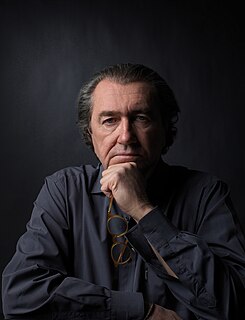 W
WBrian Dailey is an American artist noted for his careers in both art and international relations. His work in a variety of mediums—including photography, film, installations, and painting—engages with the social, political, and cultural issues of our times and is not easily categorized. Dailey's art reflects his unconventional evolution as an artist and multifaceted life experiences, which include national level involvement in arms control, space policy, intelligence systems, and international security. He is based in the Washington DC metropolitan area and maintains studios in the District and Woodstock, Virginia.
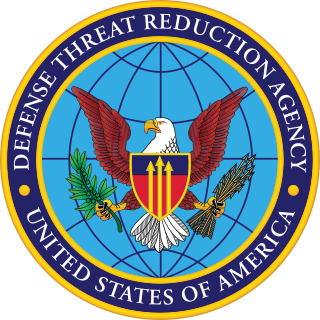 W
WThe Defense Threat Reduction Agency (DTRA) is an agency within the United States Department of Defense (DoD) and is the official Combat Support Agency for countering weapons of mass destruction. According to the agency's Strategic Plan for Fiscal Years 2018 to 2022, the DTRA mission "enables DoD and the U.S. Government to prepare for and combat weapons of mass destruction and improvised threats and to ensure nuclear deterrence." The agency is headquartered in Fort Belvoir, Virginia.
 W
WThe Libyan disarmament issue was peacefully resolved in December 2003 when Libyan leader Muammar Gaddafi agreed to eliminate his country's weapons of mass destruction program, including a decades-old nuclear weapons program. Mohamed ElBaradei, head of the International Atomic Energy Agency, said Libya's nuclear program was "in the very initial stages of development" at the time.
 W
WMohamed Mustafa ElBaradei is an Egyptian law scholar and diplomat who served as Vice President of Egypt on an interim basis from 14 July 2013 until his resignation on 14 August 2013.
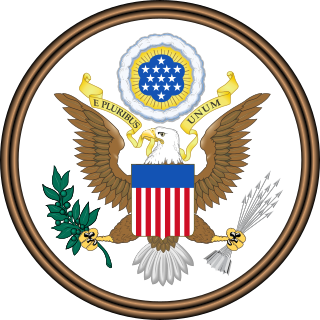 W
WFormer Soviet Union Demilitarization Act of 1992, 22 U.S.C. ch. 68 §§ 5901-5931, is a United States Federal law created to coordinate disarmament efforts with the former Soviet Union. The Act, better known as the National Defense Authorization Act for Fiscal Year 1993, provided legislative authority for the United States Department of Defense supporting armament retooling, chemical demilitarization, and nonproliferation initiatives.
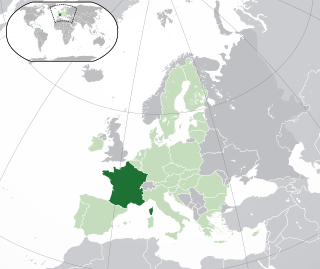 W
WFrance is one of the five "Nuclear Weapons States" under the Treaty on the Non-Proliferation of Nuclear Weapons, but is not known to possess or develop any chemical or biological weapons. France was the fourth country to test an independently developed nuclear weapon, doing so in 1960 under the government of Charles de Gaulle. The French military is currently thought to retain a weapons stockpile of around 300 operational (deployed) nuclear warheads, making it the third-largest in the world, speaking in terms of warheads, not megatons. The weapons are part of the national Force de frappe, developed in the late 1950s and 1960s to give France the ability to distance itself from NATO while having a means of nuclear deterrence under sovereign control.
 W
WA gas centrifuge is a device that performs isotope separation of gases. A centrifuge relies on the principles of centripetal force accelerating molecules so that particles of different masses are physically separated in a gradient along the radius of a rotating container. A prominent use of gas centrifuges is for the separation of uranium-235 (235U) from uranium-238 (238U). The gas centrifuge was developed to replace the gaseous diffusion method of uranium-235 extraction. High degrees of separation of these isotopes relies on using many individual centrifuges arranged in cascade, that achieve successively higher concentrations. This process yields higher concentrations of uranium-235 while using significantly less energy compared to the gaseous diffusion process.
 W
WRafael Mariano Grossi is an Argentine diplomat. He has served as Director General of the International Atomic Energy Agency since December 3 2019. He was formerly the Argentine Ambassador to Austria, Slovenia, Slovakia and International Organisations based in Vienna (2013–2019).
 W
WThe alleged illicit activities of the North Korean state include manufacture and sale of illegal drugs, the manufacture and sale of counterfeit consumer goods, human trafficking, arms trafficking, wildlife trafficking, counterfeiting currency, terrorism, and other areas. It is alleged many of these activities are undertaken at the direction and under the control of the North Korean government and the ruling Workers' Party of Korea, with their proceeds going towards advancing the country's nuclear and conventional arms production, funding the lifestyles of the country's elite, and propping up the North Korean economy.
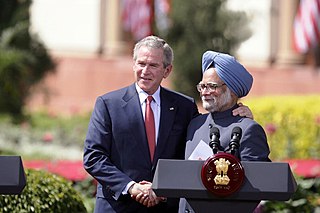 W
WThe 123 Agreement signed between the United States of America and the Republic of India is known as the U.S.–India Civil Nuclear Agreement or Indo-US nuclear deal. The framework for this agreement was a July 18, 2005, joint statement by then Indian Prime Minister Dr.Manmohan Singh and then U.S. President George W. Bush, under which India agreed to separate its civil and military nuclear facilities and to place all its civil nuclear facilities under International Atomic Energy Agency (IAEA) safeguards and, in exchange, the United States agreed to work toward full civil nuclear cooperation with India. This U.S.-India deal took more than three years to come to fruition as it had to go through several complex stages, including amendment of U.S. domestic law, especially the Atomic Energy Act of 1954, a civil-military nuclear Separation Plan in India, an India-IAEA safeguards (inspections) agreement and the grant of an exemption for India by the Nuclear Suppliers Group, an export-control cartel that had been formed mainly in response to India's first nuclear test in 1974. In its final shape, the deal places under permanent safeguards those nuclear facilities that India has identified as "civil" and permits broad civil nuclear cooperation, while excluding the transfer of "sensitive" equipment and technologies, including civil enrichment and reprocessing items even under IAEA safeguards. On August 18, 2008 the IAEA Board of Governors approved, and on February 2, 2009, India signed an India-specific safeguards agreement with the IAEA. After India brought this agreement into force, inspections began in a phased manner on the 35 civilian nuclear installations India has identified in its Separation Plan. The deal is seen as a watershed in U.S.-India relations and introduces a new aspect to international nonproliferation efforts. On August 1, 2008, the IAEA approved the safeguards agreement with India, after which the United States approached the Nuclear Suppliers Group (NSG) to grant a waiver to India to commence civilian nuclear trade. The 48-nation NSG granted the waiver to India on September 6, 2008 allowing it to access civilian nuclear technology and fuel from other countries. The implementation of this waiver made India the only known country with nuclear weapons which is not a party to the Non-Proliferation Treaty (NPT) but is still allowed to carry out nuclear commerce with the rest of the world.
 W
WThe Institute for Science and International Security (ISIS) is a nonprofit, non-governmental institution to inform the public about "science and policy issues affecting international security". Founded in 1993, the group is led by founder and former United Nations IAEA nuclear inspector David Albright. ISIS was founded on a belief that scientists have an obligation to participate actively in solving major problems of national and international security. ISIS focuses primarily on four parts: 1) prevent the spread of nuclear weapons and related technology to other nations and terrorists, 2) lead to greater transparency of nuclear activities worldwide, 3) reinforce the international non-proliferation regime, and 4) cut down nuclear arsenals. Furthermore, ISIS seeks to build stable foundations for various efforts to reduce the threat posed by nuclear weapons to U.S. and international security by integrating technical, scientific and policy research. As the effectiveness of ISIS was recognized in the Global “Go-To Think Tanks” rankings, ISIS consistently places in the top 25 Science and Technology Think Tanks in the world and in 2015 placed as one of the top United States and foreign policy think tanks in the world.
 W
WThe Institute of Nuclear Materials Management (INMM) is an international technical and professional organization that works to promote safe handling of nuclear material and the safe practice of nuclear materials management through publications, as well as organized presentations and meetings.
 W
WThe International Atomic Energy Agency (IAEA) is an international organization that seeks to promote the peaceful use of nuclear energy, and to inhibit its use for any military purpose, including nuclear weapons. The IAEA was established as an autonomous organisation on 29 July 1957. Though established independently of the United Nations through its own international treaty, the IAEA Statute, the IAEA reports to both the United Nations General Assembly and Security Council.
 W
WIran's nuclear program is made up of a number of nuclear facilities, including nuclear reactors and various nuclear fuel cycle facilities.
 W
WEight sovereign states have publicly announced successful detonation of nuclear weapons. Five are considered to be nuclear-weapon states (NWS) under the terms of the Treaty on the Non-Proliferation of Nuclear Weapons (NPT). In order of acquisition of nuclear weapons these are the United States, the Soviet Union, the United Kingdom, France, and China.
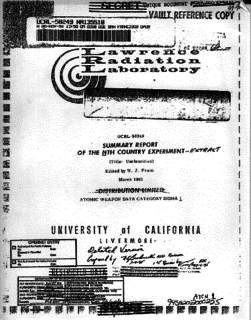 W
WThe Nth Country Experiment was an experiment conducted by Lawrence Livermore National Laboratory starting in May 1964 which sought to assess the risk of nuclear proliferation. The experiment consisted in paying three recent young physicists who had just received their PhDs, though had no prior weapons experience, to develop a working nuclear weapon design using only unclassified information, and with basic computational and technical support. "The goal of the participants should be to design an explosive with a militarily significant yield", the report on the experiment read, "A working context for the experiment might be that the participants have been asked to design a nuclear explosive which, if built in small numbers, would give a small nation a significant effect on their foreign relations."
 W
WNuclear ethics is a cross-disciplinary field of academic and policy-relevant study in which the problems associated with nuclear warfare, nuclear deterrence, nuclear arms control, nuclear disarmament, or nuclear energy are examined through one or more ethical or moral theories or frameworks. In contemporary security studies, the problems of nuclear warfare, deterrence, proliferation, and so forth are often understood strictly in political, strategic, or military terms. In the study of international organizations and law, however, these problems are also understood in legal terms. Nuclear ethics assumes that the very real possibilities of human extinction, mass human destruction, or mass environmental damage which could result from nuclear warfare are deep ethical or moral problems. Specifically, it assumes that the outcomes of human extinction, mass human destruction, or environmental damage count as moral evils. Another area of inquiry concerns future generations and the burden that nuclear waste and pollution imposes on them. Some scholars have concluded that it is therefore morally wrong to act in ways that produce these outcomes, which means it is morally wrong to engage in nuclear warfare.
 W
WNuclear Non-Proliferation Act of 1978, 22 U.S.C. § 3201, is a United States federal law declaring that nuclear explosive devices pose a perilous threat to the security interests of the United States and continued international progress towards world peace and the development of nations.
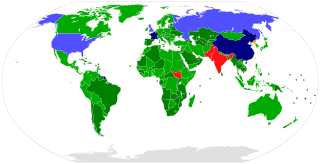 W
WThe Treaty on the Non-Proliferation of Nuclear Weapons, commonly known as the Non-Proliferation Treaty or NPT, is an international treaty whose objective is to prevent the spread of nuclear weapons and weapons technology, to promote cooperation in the peaceful uses of nuclear energy, and to further the goal of achieving nuclear disarmament and general and complete disarmament. Between 1965 and 1968, the treaty was negotiated by the Eighteen Nation Committee on Disarmament, a United Nations-sponsored organization based in Geneva, Switzerland.
 W
WThe 2016 Nuclear Security Summit was a summit held in Washington, D.C., United States on March 31 and April 1, 2016. It was the fourth edition of the conference, succeeding the 2014 Nuclear Security Summit.
 W
WThe Nuclear Suppliers Group (NSG) is a multilateral export control regime and a group of nuclear supplier countries that seek to prevent nuclear proliferation by controlling the export of materials, equipment and technology that can be used to manufacture nuclear weapons.
 W
WThe Nuclear Threat Initiative (NTI) is a nonpartisan, nonprofit organization founded in 2001 by former U.S. Senator Sam Nunn and philanthropist Ted Turner in the United States, which works to prevent catastrophic attacks and accidents with weapons of mass destruction and disruption – especially nuclear, biological, radiological, chemical, and cybersecurity.
 W
WPrior to 1991, Ukraine was part of the Soviet Union and had Soviet nuclear weapons in its territory.
 W
WAs the collapse of the Soviet Union appeared imminent, the United States and their NATO allies grew concerned of the risk of nuclear weapons held in the Soviet republics falling into enemy hands. The Cooperative Threat Reduction (CTR) Program was an initiative housed within the Defense Threat Reduction Agency (DTRA). The CTR program is better known as the Nunn–Lugar Act which was authored and cosponsored by Sens. Sam Nunn (D-GA) and Richard Lugar (R-IN). This Act was created in 1986 in a congressional meeting. According to the CTR website, "the purpose of the CTR Program is to secure and dismantle weapons of mass destruction and their associated infrastructure in former Soviet Union states." An alternative explanation of the program is "to secure and dismantle weapons of mass destruction in states of the former Soviet Union and beyond".
 W
WOperation Smiling Buddha was the assigned code name of India's first successful nuclear bomb test on 18 May 1974. The bomb was detonated on the army base Pokhran Test Range (PTR), in Rajasthan, by the Indian Army under the supervision of several key Indian generals.
 W
WThe RDS-1, also known as Izdeliye 501 and First Lightning, was the nuclear bomb used in the Soviet Union's first nuclear weapon test. The United States assigned it the code-name Joe-1, in reference to Joseph Stalin. It was detonated on 29 August 1949 at 7:00 a.m., at the Semipalatinsk Test Site, Kazakh Soviet Socialist Republic, after top-secret research and development as part of the Soviet atomic bomb project.
 W
WSoviet Nuclear Threat Reduction Act of 1991, 22 U.S.C. § 2551, was chartered to amend the Arms Export Control Act enacting the transfer of Soviet military armaments and ordnances to NATO marking the conclusion of the Cold War. The Act sanctions the Soviet nuclear arsenal displacement shall be in conjunction with the implementation of the Treaty on Conventional Armed Forces in Europe. It funds the Nunn–Lugar Cooperative Threat Reduction program.
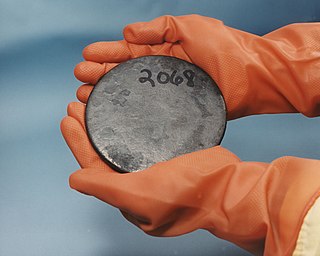 W
WSpecial nuclear material (SNM) is a term used by the Nuclear Regulatory Commission of the United States to classify fissile materials. The NRC divides special nuclear material into three main categories, according to the risk and potential for its direct use in a clandestine nuclear weapon or for its use in the production of nuclear material for use in a nuclear weapon.
 W
WThe Swiss Federal Nuclear Safety Inspectorate is Switzerland's regulatory supervisory authority for nuclear safety and for the security of nuclear installations; it supervises the nuclear power plants at Beznau, Gösgen, Leibstadt and Mühleberg, the research reactors at the Paul Scherrer Institute, the University of Basel and the Swiss Federal Institute of Technology, as well as the Swiss national central interim storage facility for radioactive waste (ZWILAG). ENSI's headquarters are located in Brugg in the Canton of Aargau.
Iran convened a conference titled "International Disarmament and Non-proliferation: World Security without Weapons of Mass Destruction" on 17 and 18 April 2010 in Tehran. The theme of the conference was Nuclear Energy for All, Nuclear Weapons for No One.
 W
WEdward Teller was a Hungarian-American theoretical physicist who is known colloquially as "the father of the hydrogen bomb", although he did not care for the title, considering it poor taste. Throughout his life, Teller was known both for his scientific ability and for his difficult interpersonal relations and volatile personality.
 W
WFriedrich Tinner, also known as Fred Tinner, is a Swiss nuclear engineer and a long-associated friend of Abdul Qadeer Khan—Pakistan's former top scientist—and connected with the Khan nuclear network trafficking in the proliferation of nuclear materials and gas centrifuge designs to Iran, Libya, and North Korea. In 2006, Tinner was revealed by the IAEA's investigators as the foreign director and technical head of the Libyan nuclear program. In Libya, Tinner ran the illicit nuclear experiments, using the expertise and technical information he received from his friend Khan, in behalf of the Libyan nuclear program. According to Khan, Tinner was the former researcher of the Kahuta Research Laboratories during the 1970s, when he worked there as a research scientist under the supervision of A. Q. Khan. Tinner is known and has been connected in particular with gas centrifuge technology used for isotopic enrichment of uranium.
 W
WThe list of parties to the Nuclear Non-Proliferation Treaty encompasses the states which have signed and ratified or acceded to the international agreement limiting the spread of nuclear weapons.
 W
WGerman submarine U-234 was a Type XB U-boat of Nazi Germany's Kriegsmarine during World War II, she was commanded by Kapitänleutnant Johann-Heinrich Fehler. Her first and only mission into enemy or contested territory consisted of the attempted delivery of uranium oxide and German advanced weapons technology to the Empire of Japan. After receiving Admiral Dönitz' order to surface and surrender and of Germany's unconditional surrender, the submarine's crew surrendered to the United States on 14 May 1945.
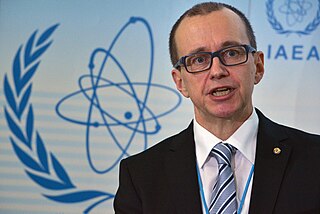 W
WTero Varjoranta is a Finnish diplomat who started working as Deputy Director General of the IAEA and Head of the agency’s Inspection and Supervision Department.
 W
WThe Vela incident, also known as the South Atlantic Flash, was an unidentified double flash of light detected by an American Vela Hotel satellite on 22 September 1979 near the Prince Edward Islands in the Indian Ocean.